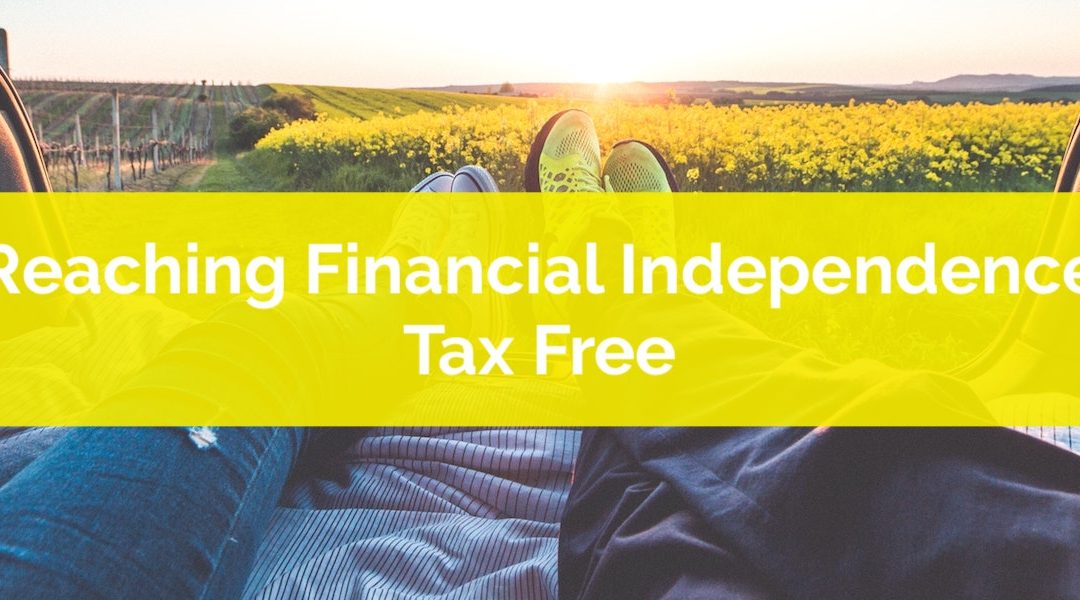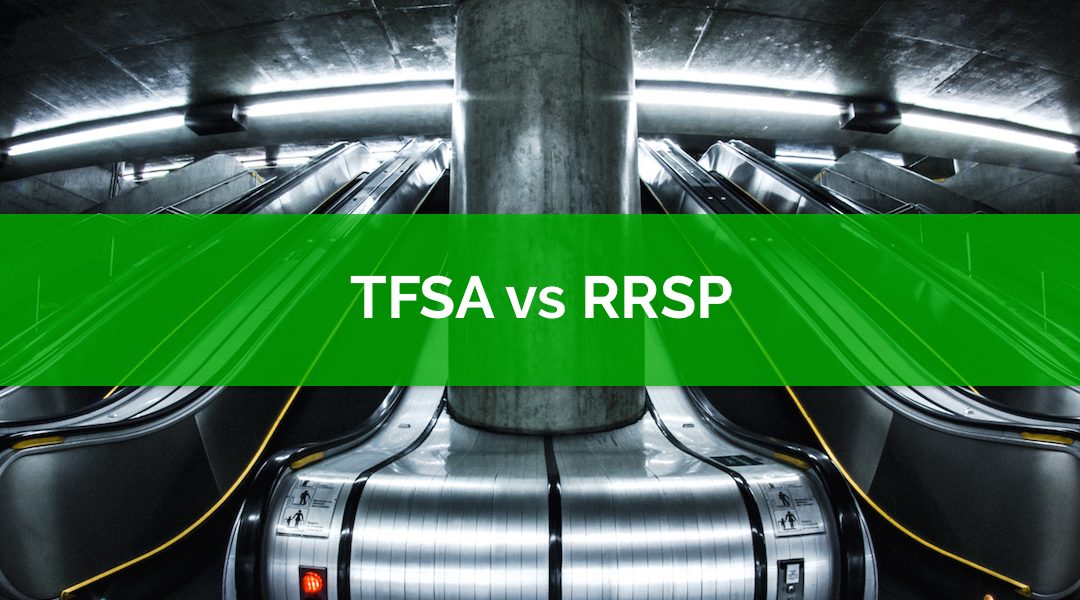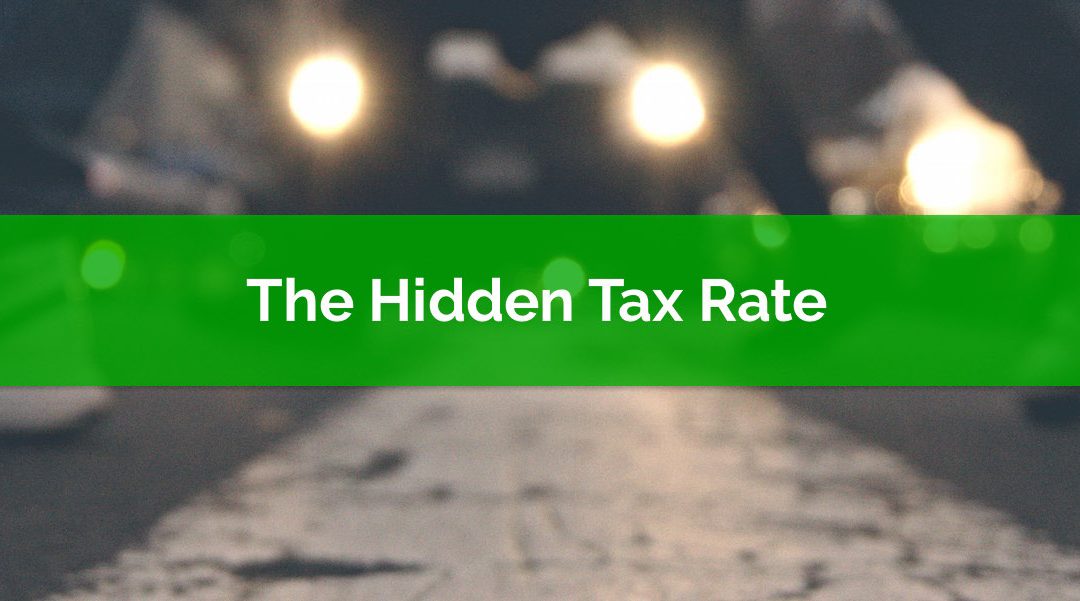
by Owen | Jul 23, 2018 | Financial Goals, Investment Planning, Retirement Planning, Tax Planning
Financial independence is a goal for many people. Financial independence is when work becomes optional. It’s when your investments are large enough to support your annual spending indefinitely, without the need for employment income. Reaching financial independence frees you from the typical work/money/time equation. When you reach financial independence you no longer have to trade your time for money.
How much you need to reach financial independence is different for everyone, but the quick and most common metric is 25 times your annual spending. Once you reach this level of savings and investments (not including your home) you can withdraw 4% of your portfolio indefinitely. With the right portfolio your investments will grow enough each year to pay you 4% of the original principal and still keep up with inflation.
Taxes are obviously a big consideration when growing your investments. Tax free growth allows your investments to grow faster and lets you hit your goals earlier.
In Canada we have two main accounts that provide tax free growth, the TFSA and RRSP. With the TFSA you pay tax now but don’t pay tax later. With the RRSP you don’t pay tax now, but you do pay tax later. Regardless of when you pay the tax, the investment growth within an RRSP or a TFSA is tax free. Using your TFSA and your RRSP to its full potential means you can hit financial independence much faster.

by Owen | Nov 6, 2017 | Retirement Planning, Tax Planning
Both TFSA and RRSP are great, but they’re also different. These tax-advantaged accounts each have their own pro’s and con’s.
If you only have a set amount to invest each month, it’s important to pick the “right” account.
The “right” account can change over time as your income and personal circumstances change.
Each account, TFSA vs RRSP, deals with taxes differently. Choosing the right account will help you save $100,000+ in tax over your lifetime. Who would say no to $100,000?!?
By choosing the right tax-advantaged account, you can actually save less each month and still achieve all your financial goals.

by Owen | Oct 16, 2017 | Retirement Planning, Tax Planning
When you think “tax shelters” you probably picture some Caribbean island. But did you know that the average Canadian has access to 2-3 tax shelters of their very own?!?!
The average Canadian family can shelter 32% of their gross income every year! They can do this in accounts that either defer or avoid taxes.
What is a tax shelter? In the broadest sense….
“A tax shelter is a financial arrangement made to avoid or minimize taxes.”
But let’s clarify something for a second, avoiding taxes is completely legal and it’s an important financial planning strategy.
What isn’t legal is tax evasion. Tax evasion is the illegal underpayment of your taxes. Tax evasion is basically when you ignore tax rules and use some tax-saving scheme. This is done through shady accounting practices or stashing money in offshore accounts in tax-havens like the Caribbean.
Every Canadian has access to a few different tax-sheltered accounts to help them legally minimize their taxes.
Tax-sheltered accounts are extremely useful because they help you delay, reduce or even avoid paying taxes all together. Using these accounts in the right way can help you avoid paying thousands of dollars in taxes and can even help you boost your government benefits!
Reducing taxes is an important component of any financial plan. Unfortunately, most Canadians don’t maximize their tax-sheltered accounts.
The average Canadian family can shelter 32% of their income each year in accounts that either defer or avoid taxes*. In this post we cover the three common tax-sheltered accounts of which every Canadian should be aware.

by Owen | Oct 9, 2017 | Government Programs, Tax Planning
Did you know? Your marginal effective tax rate could be as high as 60-70%?!?
You might be thinking….
What is a “Marginal Effective Tax Rate” anyway, and why is it so high?!?
Well….. let’s start with a term you might be more familiar with, your marginal tax rate (no effective).
You marginal tax rate is how much tax you pay on the next dollar you earn. For high income earners this can be above 53%. For the next $100 they earn, $53 goes to taxes and only $47 goes in their pocket.
Thankfully, with our progressive tax system, low and moderate income earners pay a much lower rate, typically in the 20% to 40% range depending on their income. This means a low or moderate income household will only lose $20 to $40 of the next $100 they earn to income tax.
Your marginal effective tax rate is your marginal tax rate plus the claw back from government programs. These claw backs are based on your net income and work much the same way that income tax does, the more you earn, the more of your government benefits get clawed back.
This is a very important consideration when planning your finances. For some low and moderate income households these government claw backs can exceed 30%. This can push Marginal Effective Tax Rate (METR) over 60%. That means $60 of the next $100 they earn will be lost to taxes and claw backs!!!
For example, a family with two children (my situation) who is earning ~$50,000 per year will lose 32.5% of the next dollar to claw backs and 29.7% to income taxes. Their combined marginal effective tax rate is 62.2%!
A family of four earning $50,000 can easily have a marginal effective tax rate that is higher than a single person earning $220,000+.
Two things greatly affect METRs, marital status and children. These two factors affect government benefits the most so in this post I’ll look at how different family situations can affect your METR and I’ll show you in detail how I calculated the METR for my family, including the income level where each government benefit gets clawed back.

by Owen | Oct 2, 2017 | Government Programs, Tax Planning
There are many government benefit programs that are “income tested”.
You might be asking… “What does “income tested” mean exactly?!?”
This means that the benefits you receive will fluctuate with your net income.
Higher income means lower benefits. Lower income means higher benefits. For low or moderate income households this becomes a very important consideration when creating a financial plan.
At the most extreme, a family with two children earning around $50,000 can expect to lose 32.5% of the next dollar they earn due to these benefit claw backs. This is on top of their marginal tax rate of 29.65%. That means that between claw backs and income taxes over 60% of the next dollar earned will go to the government. Ouch!
While this is an extreme case it does illustrate the impact of these claw backs on certain income levels and family types.
The challenge with these benefits is that the calculation is often not straightforward. Specific rules and claw back rates are often hidden and not easily found. There are also considerations like marital status, number of dependents, disability, income and deductions. This makes it difficult to understand your particular claw back rate.
In addition, many income tested benefits are not based on gross income but on net income, more specifically adjusted family net income (AFNI). In the most basic sense this is your gross income minus any deductions.
One of the most interesting financial planning opportunities this creates is with RRSP contributions.
RRSP contributions are considered a tax deduction and will decrease your net income. This in turn will increase your government benefits. That’s right, the government will increase your benefits today if you save for the future. For low and moderate income households this can sometimes make RRSP contributions more appealing vs TFSA contributions.
This is a BIG post, there are eight government programs we’ll cover.
For each benefit program, we include the benefit amount, the claw back rate and the income level at which the benefit disappears entirely.

by Owen | Jun 5, 2017 | Financial Planning, Tax Planning
Children are expensive. There are the obvious expenses like day care, clothing, food and diapers. Then there are the not so obvious expenses like owning a larger home or a larger car.
For low and moderate income earners, there is a special benefit called the Canada Child Benefit (CCB) that can help offset some of these expenses.
The benefit starts at a maximum of $6,500/year for each child under 6 and $5,400/year for each child between 6 and 17.
These amounts get reduced as soon as a family’s taxable income passes $30,000. For someone with two children under 6 the benefit disappears entirely once the family income crosses $207,000.
Because the child benefit gets clawed back for each incremental dollar in taxable income. It works essentially the same as a tax rate. Except its effect is slightly hidden.






